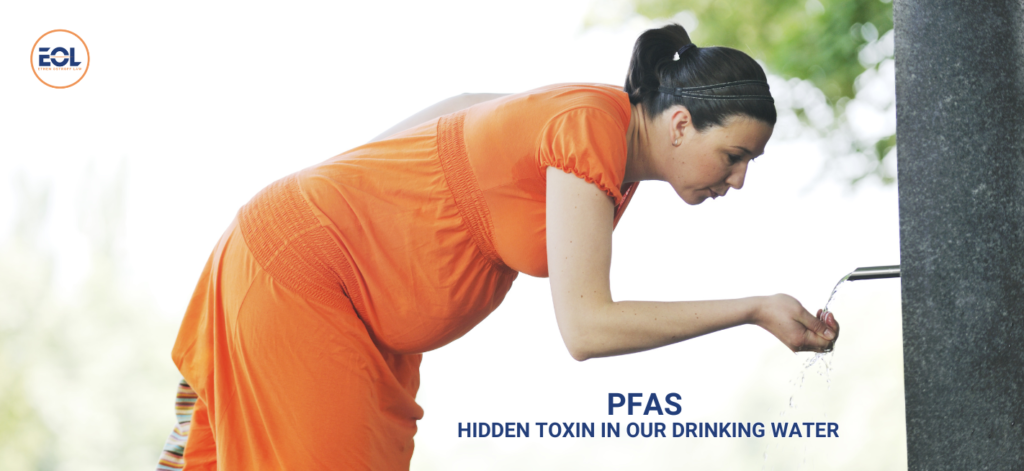PFAS Water Contamination Lawsuit | Cancer & Other Injuries
For decades, chemical companies covered up evidence of per-and polyfluoroalkyl substances’ (PFAS) health hazards. Now, nearly all Americans have PFAS in their blood, and more than 200 million may be drinking PFAS-tainted water. For a few years now, complainants have been filing cases over the health and environmental damage caused by PFAS exposure. With more than 4,000 PFAS Water Contamination Lawsuit filed since 2005, litigation is presenting a huge threat to many companies. Here, Ethen Ostroff Law explores the complexities of these lawsuits and explains how they can assist you in receiving the highest PFAS contamination settlement amount.
What are PFAS?
As explained above, “per- and poly-fluoroalkyl substances” (PFAS) are synthetic chemicals. They are known as “forever chemicals.” PFAS are commonly used in consumer products like cookware and firefighting foams. The most common types of PFAS are perfluorooctanoic acid (PFOA) and perfluorooctanesulfonic acid (PFOS). PFAS are partially phased out in the US.
Because of their inability to degrade naturally, PFAS remain in the environment and in living things. They cannot be removed from the water using even the most advanced water treatment methods. PFAS molecules have a chain of linked carbon and fluorine atoms that allows them to endure in the manner that they do.
What company developed PFAS?
3M Corp. invented PFOA in 1947 with several other chemical compounds referred to by the company as “C8” because it has eight carbons tied to fluorine.
Who are the top producers of PFAS in the world?
- AGC Chemicals Americas, Inc.
- Arkema, Inc.
- The Chemours Co.
- Daikin Industries, Ltd.
- 3M Corp.
- Solvay S.A.
- Dongyue Group Limited
- Archroma Management GmbH
- Merck Group
- Bayer Corp.
- BASF SE
- Honeywell International Inc.
Where can PFAS be found?
PFAS can be found in our water, soil, air, and food, as well as in everyday items in our homes or workplaces, such as:
- Drinking water such as public drinking water systems and private drinking water wells
- Soil and water at or near waste sites, including landfills, disposal sites, and hazardous waste sites like those that fall under the federal Superfund and Resource Conservation and Recovery Act programs
- Fire extinguishing foams like aqueous film-forming foams (or AFFFs) used to extinguish flammable liquid-based fires in training and emergency response events at airports, shipyards, military bases, firefighting training facilities, chemical plants, and refineries
- Manufacturing or chemical production facilities that produce or use PFAS like chrome plating, electronics, and certain textile and paper manufacturers
- Food, such as fish caught from water contaminated by PFAS or dairy products from livestock exposed to PFAS
- Food packaging, including grease-resistant paper, fast food containers and wrappers, microwave popcorn bags, pizza boxes, and candy wrappers
- Household products and dust like stain and water-repellent used on carpets, upholstery, clothing, and other fabrics; cleaning products; non-stick cookware; paints, varnishes, and sealants
- Personal care products like shampoo, dental floss, and cosmetics
- Biosolids like fertilizers from wastewater treatment plants used on agricultural lands that can affect ground and surface water and animals
What is the environmental impact of PFAS contamination?
Aside from health concerns, PFAS contamination also has severe environmental consequences. These substances have the potential to build up in soil and water, contaminating aquatic life and upsetting entire ecosystems. Cleaning up PFAS contamination is a challenging and costly process for water districts and treatment plants.
For a map of wildlife at risk from PFAS exposure, click https://www.ewg.org/interactive-maps/pfas_in_wildlife/map/
What are the negative impacts of PFAS on public health?
Hundreds of everyday products are made with PFAS. PFAS do not break down in the environment. Subsequently, these toxic substances build up in our bodies and our surroundings. According to studies, very small doses of them pose serious health risks, including:
- Cancer (testicular, kidney, liver, and pancreatic cancer)
- Dyslipidemia
- Elevated liver enzymes
- Endocrine disruption
- Higher cholesterol
- Hypothyroidism
- Immune suppression (decreased vaccination response)
- Lower birth weight
- Nonalcoholic liver disease
- Preeclampsia and pregnancy-related hypertension
- Reproductive problems
- Weakened childhood immunity
- Weight gain in children and dieting adults

How can I be exposed to PFAS?
Almost everyone has been exposed to PFAS. They are in consumer products, lakes and streams, aquatic life, and drinking water supplies. The most common ways to be exposed to PFAS include:
- Drinking contaminated water
- Eating fish caught from PFAS-contaminated water
- Eating food grown or raised near places that used or made PFAS
- Eating food packaged in material that contains PFAS
- Using consumer products that contain PFAS
Who are those most exposed to PFAS?
- Children who tend to drink more water, eat more food, and breathe more air
- Environmental clean-up workers
- Firefighters
- Pregnant and lactating women who tend to drink more water
- Those living near contaminated sites
- Workers involved in making or processing PFAS and PFAS-containing material, such as chemical plant workers and industrial workers
How can I reduce my PFAS exposure?
- Avoid using firefighting foam.
- Select PFAS-free products.
- Do not use PFAS-containing cookware or food packaging.
- Properly dispose of PFAS-containing items.
- Keep updated on PFAS-related news.
- Only use certified water filters for your drinking water.
- Wash your hands regularly to reduce contact with PFAS.

How do I test myself for PFAS?
PFAS blood testing determines the concentration of PFAS in your blood. The test results, however, are unclear regarding health implications.
Who are responsible for PFAS pollution?
- Manufacturers or companies that make PFAS or use them in their products.
- Industries that use PFAS in their processes or products, leading to contamination. At least 475 industrial facilities may be discharging PFAS into the environment. For a map of those facilities, click https://www.ewg.org/interactive-maps/2019_suspected_industrial_discharges_of_pfas/map/
- Military and firefighting, where PFAS-containing firefighting foams are used that can cause contamination at bases and airports. For a complete list of the 710 military sites with known or suspected discharges of PFAS, click https://www.ewg.org/interactive-maps/2020-military-pfas-sites/map/
- Improper disposal of PFAS-containing items that can pollute soil and water near landfills.
- Historical use and release of PFAS that left long-lasting contamination in those areas.
- Weak government regulations or enforcement of PFAS use and disposal contribute to widespread contamination.
PFAS Contamination and Health Risks near Bucks and Montgomery County Military Bases, Pennsylvania
The Agency for Toxic Substances and Disease Registry (ATSDR) and the Pennsylvania Department of Health are evaluating PFAS levels in drinking water and the possibility of health effects from exposure within a 15-mile radius of military bases in Bucks and Montgomery Counties, Pennsylvania. These bases used PFAS-containing firefighting foams.
These military bases are:
- Former Naval Air Station Joint Reserve Base Willow Grove (Montgomery County)
- Former Naval Air Warfare Center Warminster (Bucks County)
- Current Horsham Air Guard Station (Montgomery County)
Results from public drinking water sampling near these military bases show that:
- The Willow Grove site showed PFOS, PFOA, and PFHxS levels above ATSDR screening levels
- PFAS levels in on-base drinking water supply wells were higher than any of the other results for drinking water sources off-base. The maximum levels detected in the on-base water system were 13,700 ppt PFOS and 8,100 ppt PFOA.
- The highest level of PFAS in private drinking water wells was greater than the highest level in public water supplies. The maximum combined level of PFOS and PFOA in any one private well was 8,100 ppt.
The Navy and the Air National Guard have the lead roles in cleaning up the sites.

What government agency is responsible for addressing PFAS contamination?
The Environmental Protection Agency (EPA) is responsible for tackling PFAS contamination throughout the US to protect public and environmental health from contamination. The EPA regulates and addresses the presence of PFAS in the environment by developing guidelines and standards. The Agency ensures that appropriate measures to manage and mitigate PFAS pollution are implemented.
What is the government doing about the PFAS contamination crisis?
- EPA. The agency has been taking actions to deal with PFAS contamination. In 2023, they asked the public for input on how to handle PFAS as hazardous substances under CERCLA. They also proposed safe levels for six PFAS in drinking water and allocated $2 billion to address emerging contaminants. The EPA wants to prevent companies from using old PFAS without review, and they are studying PFAS in various discharges. It created a webpage with PFAS information and gave guidance to states on reducing PFAS pollution. The EPA also proposed better reporting on PFAS to track its use.
- Food and Drug Administration. The FDA has been developing validated methods for testing for PFAS in diverse types of foods. The agency works with states to identify and assess the safety of locally grown and produced foods in areas with known PFAS contamination. It has joined the government-wide approach led by the White House to securing clean air, safe food, and clean drinking water.
- The Pentagon. The Defense Department continues its efforts to clean up contamination with toxic PFAS at hundreds of military bases nationwide. However, the clean-up is moving too slowly and could linger for 50 years without an influx of funds.
- Congress. Congress has introduced dozens of bills to monitor the scope of PFAS contamination, ban non-essential uses of PFAS, address ongoing PFAS contamination, and clean up legacy PFAS pollution.
Who can file a PFAS water contamination lawsuit?
- Businesses affected by PFAS water contamination
- Cities or municipalities that incurred costs or damages due to PFAS water contamination
- Individuals who suffered health problems like cancer because of PFAS exposure from contaminated water
- People who live or have lived in areas affected by PFAS water contamination
- Persons who own property or home in areas affected by PFAS
What are the possible damages from a PFAS contamination lawsuit?
- Medical care costs
- Mental anguish
- Lost wages
- Loss of earning capacity
- Loss of consortium
- Pain and suffering
- Legal fees
Are there lawsuits over PFAS contamination?
There are. For example, a multidistrict litigation (MDL) (MDL-2873) is now before Judge Richard M. Gergel of the US District Court of South Carolina. The South Carolina court is handling over 2,500 cases from across the country involving AFFFs and PFAS contamination. The MDL includes hundreds of local governments suing to recover costs due to contamination of public water supplies. Other plaintiffs in the MDL are individuals with traditional product liability cases alleging that exposure to AFFF caused cancer. Although many different companies made and sold products containing PFAS, 3M, and DuPont are the primary defendants in this litigation.
What companies are in the PFAS lawsuit?
The defendants in the PFAS Lawsuit include:
- 3M Co.
- Archroma
- BASF SE
- Clariant AG
- Corteva Inc.
- DuPont de Nemours Inc.
- Honeywell International Inc.
- Johnson Controls International PLC
- Mine Safety Appliances Co.
- NSK Americas Inc.
- Phillips 66
- Raytheon Technologies Corp.
- The Chemours Co.
- W. L. Gore & Associates Inc.
What states are suing over PFAS?
States, including Maine, Maryland, New Mexico, and Rhode Island, have filed lawsuits against PFAS manufacturers like 3M, Chemours, Corteva, and DuPont. They claim these large chemical companies’ PFAS are harming residents and the environment. The states ask for billions of dollars in damages to compensate for the health effects and the costs of cleaning up and monitoring polluted sites.
What is the 3M lawsuit for forever chemicals?
Thousands of PFAS Water Contamination Lawsuit were filed against 3M. Plaintiffs claim 3M knew the chemicals in its consumer products could cause cancer and other health problems. In December 2022, 3M announced it would stop producing PFAS by 2025 amid increased legal and regulatory scrutiny. The company struck a tentative $10.3 billion deal with US cities and towns to settle lawsuits over the contamination of many public drinking water systems with potentially harmful compounds like PFAS. Nevertheless, 3M said the settlement does not admit any liability.
How do I file a PFAS water contamination lawsuit?
Gather any documents related to the PFAS water contamination, including medical records, water test results, and any communication with authorities or responsible parties.
- Find an attorney who specializes in environmental or toxic tort law.
- Work with your lawyer to prepare the necessary legal documents.
- Your lawyer will file the PFAS water contamination lawsuit on your behalf and handle the paperwork.
- During the discovery stage, both parties exchange information and evidence related to the case.
- Your lawyer will represent your interests in settlement discussions or negotiations if possible.
- If a settlement is not feasible, your case goes to trial.
- A judge or jury decides the outcome of your case.
- Either party may appeal the decision.
When seeking compensation for PFAS water contamination, individuals have two main options: filing an individual personal injury lawsuit or participating in a PFAS Water contamination class action lawsuit.
Contact Ethen Ostroff Law Firm Today
Ethen Ostroff Law and its partner firms are currently offering legal assistance to individuals who have been diagnosed with certain diseases due to PFAS water contamination or/and have lived on or near an affected military base, like Naval Air Warfare Center Warminster Airport and Willow Grove Naval Air Station Place. We are accepting cases for Tiers 1 and 2 Diseases.
Tier 1 diseases are:
- Kidney Cancer
- Testicular Cancer
- Prostate Cancer
- Pancreatic Cancer
- Liver Cancer
- Bladder Cancer
- Thyroid Cancer
- Thyroid Disease
- Ulcerative Colitis
Tier 2 diseases are:
- Non-Hodgkin’s Lymphoma
- Colorectal Cancer
- Leukemia
- Breast Cancer
- Ovarian Cancer
- Endometrial Cancer
The targeted military bases with the strongest levels of PFAS chemicals are:
- Alameda Naval base, California
- Chanute Air Force base, Illinois
- China Lake Naval base, California
- Dallas Naval base, Texas
- Dover Air Force base, Delaware
- Eielson Air Force base, Alaska
- Ellsworth Air Force base, South Dakota
- England Air Force base, Louisiana
- Jacksonville Naval base, Florida
- Joint Base Langley-Eustis, Virginia
- Joint Base San Antonio – Lackland, Randolph, Ft Sam Houston, Camp Bullis, Texas
- Moody Air Force base, Georgia
- NAS Oceana Naval base, Virginia
- Naval Air Warfare Center Warminster Airport, Pennsylvania
- Patrick Air Force base, Florida
- Pease Air Force base, New Hampshire
- Peterson Air Force base, Colorado
- Plattsburgh Air Force Base, New York
- Port Hueneme Naval base, California
- Richards-Gebaur Air Force base, Missouri
- Seymour Johnson Air Force base, North Carolina
- Willow Grove Naval Air Station Place, Pennsylvania
If you want to file your PFAS water contamination lawsuit in 2023, reach out to Ethen Ostroff Law. We will analyze your case and help you get access to the top PFAS contamination lawyers in Pennsylvania and across the country. Our network of attorneys has extensive years of experience and proven strategies that will surely help you get a fair PFAS contamination case settlement.
What are you waiting for? Contact Ethen Ostroff Law now at 610-510-8883 ( by calling this number, you consent to receive SMS updates from Ethen Ostroff Law) or Submit Form to get free consultation.


